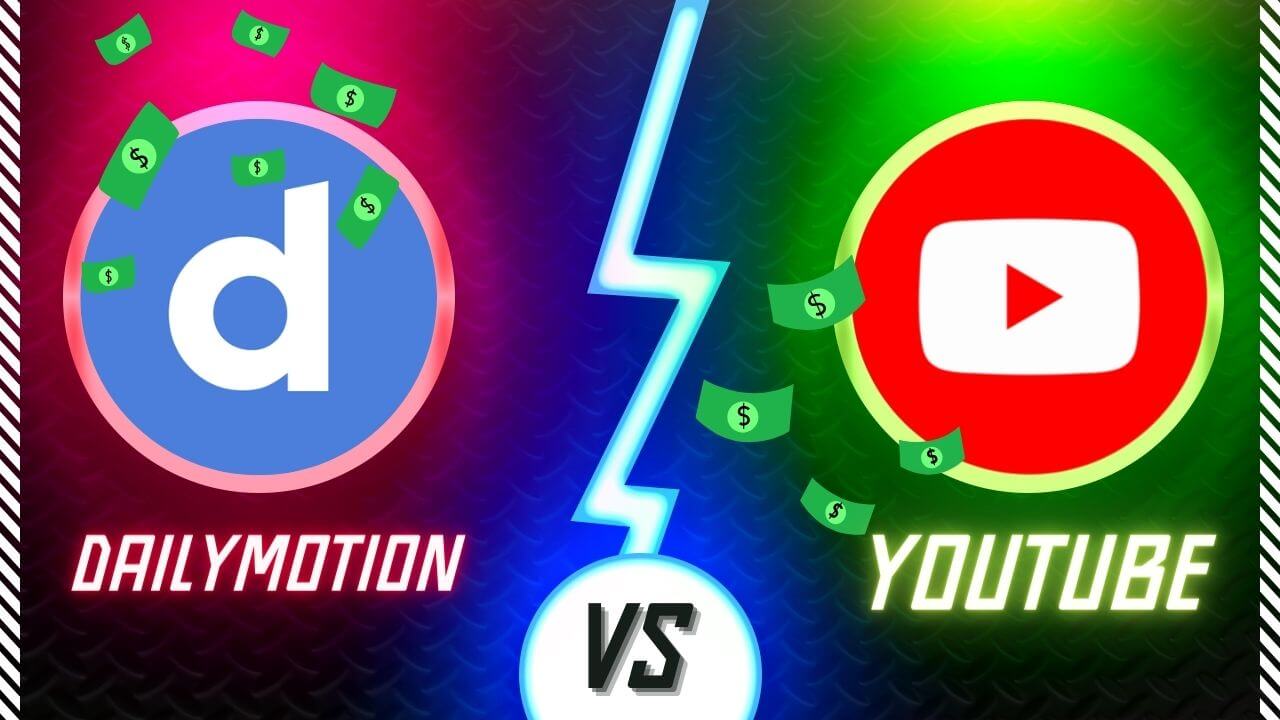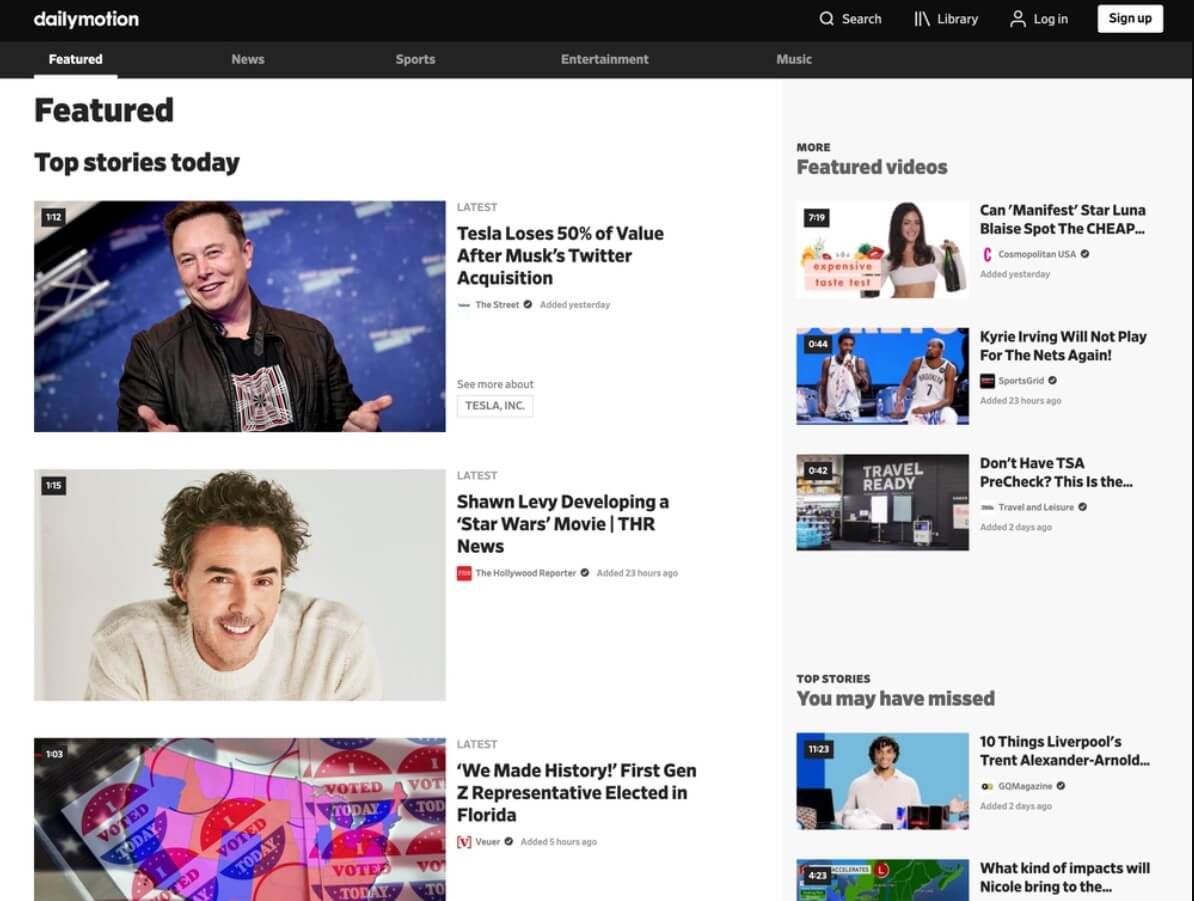DailyMotion vs YouTube Monetization: A Comprehensive Comparison

Introduction about DailyMotion vs YouTube Monetization
In the digital age, video content has become a cornerstone of online engagement, entertainment, and education. Platforms like YouTube and DailyMotion offer creators the opportunity to share their videos with a global audience and monetize their content. However, the monetization processes on these platforms can differ significantly. This comprehensive guide will compare DailyMotion and YouTube monetization, examining their features, benefits, drawbacks, and strategies to help you decide which platform is best for maximizing your earnings.
Overview of DailyMotion and YouTube
DailyMotion

DailyMotion, a French video-sharing technology platform, has been around since 2005. It offers a diverse range of content, from news and sports to music and entertainment. While not as large as YouTube, DailyMotion has carved out its niche with a strong presence in Europe and other parts of the world.
YouTube

Launched in 2005 and acquired by Google in 2006, YouTube is the world's largest video-sharing platform. With billions of users and a vast array of content, YouTube dominates the video landscape. Its robust monetization program has enabled countless creators to earn a living through their content.
Monetization Eligibility
DailyMotion
To monetize on DailyMotion, creators must join the DailyMotion Partner Program. The eligibility requirements are relatively straightforward:
- Must have a DailyMotion account.
- Must upload original content regularly.
- Adhere to DailyMotion's community guidelines and terms of service.
YouTube
YouTube’s monetization program, known as the YouTube Partner Program (YPP), has more stringent eligibility criteria:
- At least 1,000 subscribers.
- At least 4,000 watch hours in the past 12 months.
- Adherence to YouTube's policies and guidelines, including content, community, and copyright rules.
- An AdSense account linked to your YouTube channel.
Revenue Streams
DailyMotion
DailyMotion offers several revenue streams for creators:
- Ad Revenue: Earn from ads displayed before, during, or after your videos.
- Subscription Revenue: Earn a share of revenue from users who subscribe to DailyMotion's premium services.
- Sponsorships and Brand Deals: Collaborate with brands for sponsored content.
YouTube
YouTube provides multiple monetization options:
- Ad Revenue: Earn from ads shown on your videos, including skippable and non-skippable ads, display ads, and bumper ads.
- Channel Memberships: Fans can pay a monthly fee for exclusive perks.
- Super Chat and Super Stickers: Viewers pay to have their messages highlighted during live chats.
- YouTube Premium Revenue: Earn a share of subscription fees from YouTube Premium members watching your content.
- Merchandise Shelf: Sell branded merchandise directly from your channel.
Ad Revenue Models
DailyMotion
DailyMotion's ad revenue is based on a CPM (cost per thousand impressions) model. Creators earn money based on the number of ad impressions their videos generate. The platform offers various ad formats, including pre-roll, mid-roll, and post-roll ads.
YouTube
YouTube also operates on a CPM model but includes additional metrics like CPC (cost per click) for certain ad types. The platform provides a wide range of ad formats:
- Skippable Video Ads: Viewers can skip after 5 seconds.
- Non-Skippable Video Ads: Must be watched before the video starts.
- Bumper Ads: Short, non-skippable ads up to 6 seconds.
- Overlay Ads: Semi-transparent ads that appear on the lower part of the video.
- Display Ads: Appear next to the video on the desktop site.
Payment Thresholds and Methods
DailyMotion
DailyMotion pays creators once their earnings reach a minimum threshold of $100. Payments are made through PayPal or bank transfer, depending on the creator's preference and location.
YouTube
YouTube’s payment threshold is $100, similar to DailyMotion. Payments are processed through AdSense and can be received via electronic funds transfer (EFT), wire transfer, check, or Western Union, depending on the country.
Global Reach and Audience
DailyMotion
DailyMotion has a significant user base in Europe and other regions, making it a good choice for creators targeting audiences outside the United States. The platform supports multiple languages and offers localized content, which can help creators reach diverse demographics.
YouTube
YouTube’s global dominance is unparalleled, with over 2 billion monthly active users. It supports nearly every language and has localized versions in more than 100 countries. This vast reach allows creators to connect with a global audience and potentially earn more from ad revenue.
Content Discovery and SEO
DailyMotion
DailyMotion’s content discovery relies heavily on its internal search and recommendation algorithms. While it offers some SEO capabilities, they are not as advanced as YouTube’s. Creators should focus on:
- Optimizing video titles and descriptions with relevant keywords.
- Utilizing tags effectively.
- Engaging with viewers through comments and shares.
YouTube
YouTube’s SEO capabilities are extensive, given its integration with Google. To maximize visibility, creators should:
- Use keyword-rich titles and descriptions.
- Add relevant tags.
- Create compelling thumbnails.
- Engage with viewers to boost video ranking.
- Utilize YouTube analytics to refine content strategies.
Community and Engagement
DailyMotion
DailyMotion encourages community engagement through features like comments and shares. However, it lacks some of the advanced community-building tools found on YouTube, such as community posts and stories.
YouTube
YouTube offers a robust set of tools for community engagement, including:
- Comments and Replies: Direct interaction with viewers.
- Community Posts: Text, image, or poll posts to engage with subscribers.
- YouTube Stories: Short, temporary videos similar to Instagram Stories.
- Live Streaming: Engage with viewers in real-time.
Analytics and Insights
DailyMotion
DailyMotion provides a range of analytics tools to help creators track their performance. These include metrics on views, watch time, ad revenue, and audience demographics. The insights can be used to tailor content strategies and improve engagement.
YouTube
YouTube’s analytics are comprehensive, offering detailed insights into:
- Watch Time and Views: Key metrics for monetization eligibility.
- Audience Demographics: Age, gender, location, and device usage.
- Traffic Sources: Where views are coming from, including search, external sites, and suggested videos.
- Engagement Metrics: Likes, dislikes, comments, and shares.
- Revenue Reports: Detailed breakdown of earnings from various monetization streams.
Support and Resources
DailyMotion
DailyMotion provides support through its Help Center, which includes articles and guides on various topics. Additionally, creators can contact support via email for specific issues. However, the level of support may not be as extensive as YouTube’s.
YouTube
YouTube offers a vast array of support resources, including:
- YouTube Help Center: Comprehensive guides and tutorials.
- Creator Academy: Free courses on content creation and channel growth.
- Community Forums: Interaction with other creators and YouTube staff.
- Direct Support: For YouTube Partners, direct email and chat support are available.
Content Policies and Restrictions
DailyMotion
DailyMotion’s content policies focus on maintaining a safe and respectful community. Key guidelines include:
- Prohibition of hate speech, violence, and explicit content.
- Respect for copyright and intellectual property.
- Adherence to community guidelines for appropriate content.
YouTube
YouTube’s content policies are extensive and regularly updated. Important policies include:
- Community Guidelines: Rules on hate speech, harassment, and harmful content.
- Copyright Policy: Strict adherence to copyright laws, with tools like Content ID to manage claims.
- Advertiser-Friendly Guidelines: Content suitable for monetization must meet specific criteria to ensure it is suitable for advertisers.
Pros and Cons
DailyMotion
Pros:
- Easier eligibility for monetization.
- Strong presence in Europe and parts of Asia.
- User-friendly interface and simple ad revenue model.
Cons:
- Lower global reach compared to YouTube.
- Fewer advanced features for community engagement.
- Limited SEO capabilities.
YouTube
Pros:
- Unmatched global reach and audience size.
- Multiple monetization streams.
- Advanced analytics and SEO tools.
- Robust community engagement features.
Cons:
- Higher threshold for monetization eligibility.
- Strict content policies and copyright enforcement.
- More competition among creators.
Case Studies
Successful Creators on DailyMotion
Creators who have found success on DailyMotion often focus on niche content that appeals to specific audiences. For example, European news outlets and sports channels leverage DailyMotion’s regional strength to reach their target demographics.
Successful Creators on YouTube
YouTube success stories are abundant, from beauty gurus like James Charles to tech reviewers like Marques Brownlee. These creators often employ a mix of high-quality content, consistent uploads, and strategic use of YouTube’s features like collaborations and community posts.
Strategies for Maximizing Earnings
DailyMotion
- Focus on Quality Content: High-quality, engaging videos are more likely to attract viewers and generate ad revenue.
- Utilize Smart Links: Share payment links through social media and email to increase reach.
- Optimize SEO: Use relevant keywords in titles, descriptions, and tags.
- Engage with Your Audience: Respond to comments and encourage sharing to boost visibility.
YouTube
- Consistency is Key: Regular uploads keep your audience engaged and attract new viewers.
- Leverage Multiple Revenue Streams: Utilize ads, channel memberships, Super Chat, and merchandise.
- SEO Optimization: Use keyword-rich titles, descriptions, and tags. Create compelling thumbnails and engage with your audience to boost rankings.
- Collaborate with Other Creators: Partnering with other YouTubers can expand your reach and introduce your channel to new audiences.
- Utilize YouTube Analytics: Regularly review your analytics to understand viewer behavior and refine your content strategy.
Future Prospects and Developments
DailyMotion
DailyMotion is continually evolving, with a focus on expanding its global reach and enhancing its features. Future developments may include:
- Improved monetization options and ad formats.
- Enhanced SEO capabilities.
- Greater support for creators, including more detailed analytics and community-building tools.
YouTube
YouTube remains at the forefront of video content and monetization, with ongoing innovations. Upcoming changes might include:
- New ad formats and revenue streams.
- Enhanced community engagement features.
- Continued focus on improving content discovery through advanced algorithms and machine learning.
FAQs
Which platform offers better monetization opportunities, DailyMotion or YouTube?
YouTube generally offers more diverse and lucrative monetization options, including ad revenue, channel memberships, Super Chat, and merchandise. However, DailyMotion’s simpler eligibility requirements make it easier for new creators to start earning.
Can I monetize my content on both DailyMotion and YouTube simultaneously?
Yes, you can upload and monetize your content on both platforms, provided you comply with each platform’s terms and conditions.
What are the minimum requirements to start monetizing on DailyMotion?
To monetize on DailyMotion, you need to join the DailyMotion Partner Program, regularly upload original content, and adhere to community guidelines.
What are the minimum requirements to start monetizing on YouTube?
To join the YouTube Partner Program, you need at least 1,000 subscribers and 4,000 watch hours in the past 12 months, along with adherence to YouTube’s policies and guidelines.
Which platform has a larger audience reach?
YouTube has a significantly larger global audience reach compared to DailyMotion, making it easier to attract a broad and diverse viewership.
How does payment processing work on DailyMotion and YouTube?
Both platforms have a payment threshold of $100. DailyMotion payments are made via PayPal or bank transfer, while YouTube processes payments through AdSense with options like EFT, wire transfer, check, or Western Union.
Conclusion
Choosing between DailyMotion and YouTube for monetizing your video content depends on your specific needs, audience, and content strategy. While YouTube offers more extensive monetization options and a larger global reach, DailyMotion provides an easier entry point for new creators with its straightforward eligibility requirements. By understanding the differences and leveraging the strengths of each platform, you can effectively maximize your earnings and grow your audience.





